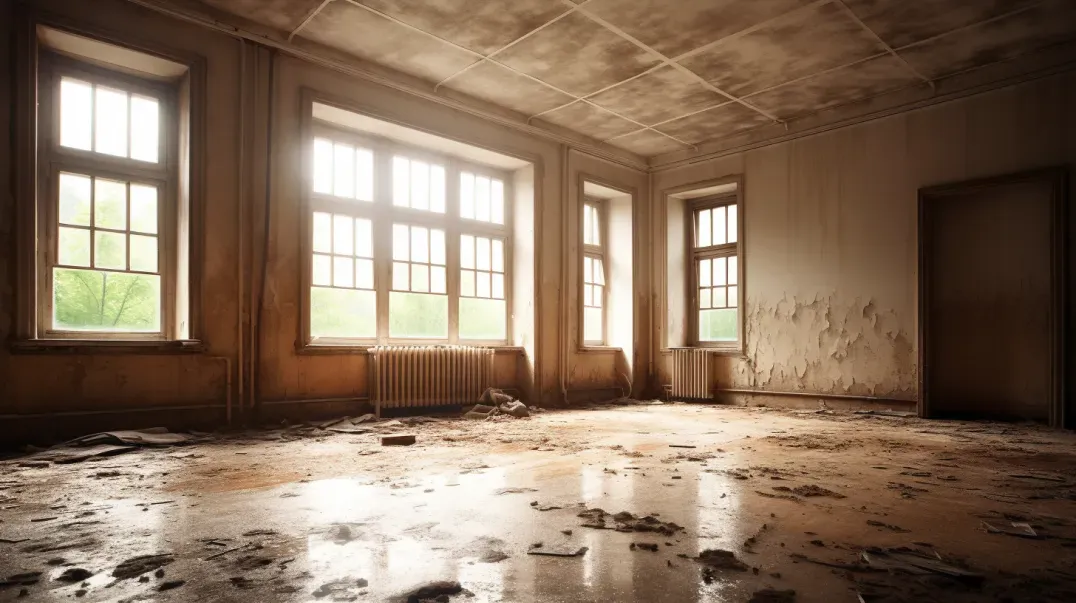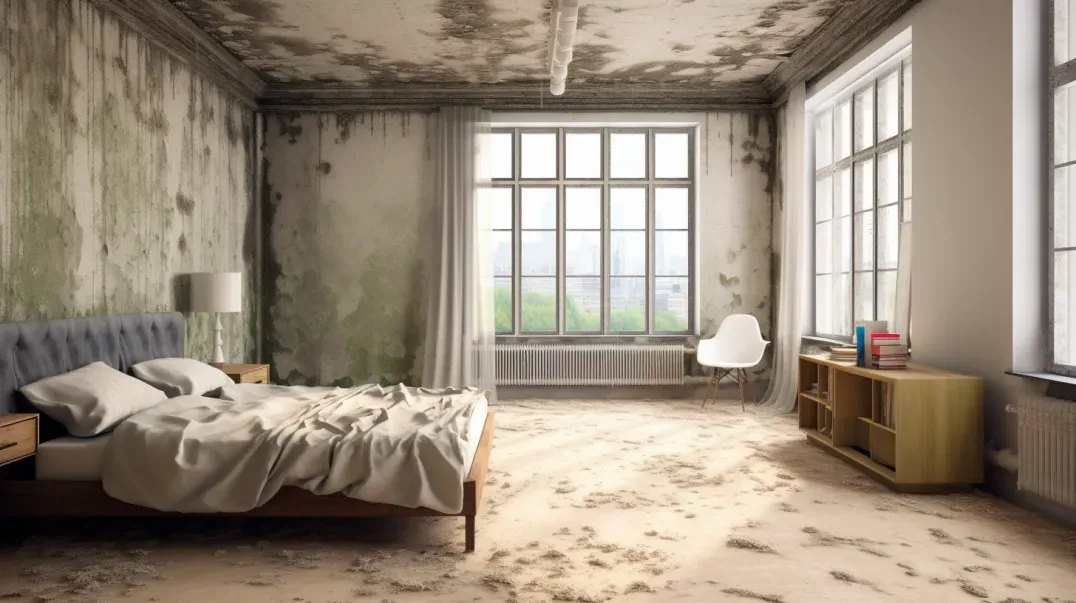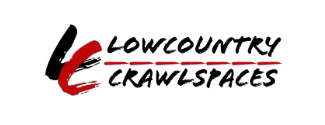The Science of Mold Growth and How to Stop It
Mold: a common yet often misunderstood foe that lurks in the hidden corners of our homes, waiting for the perfect conditions to thrive. Its presence not only detracts from the aesthetic appeal of our living spaces but also poses significant health risks and structural challenges. However, the key to effective mold prevention lies not in a relentless battle using harsh chemicals, but in understanding the intricate science that governs its existence and proliferation.
This blog delves into the fascinating world of mold growth, shedding light on the biological and environmental factors that mold spores need to flourish. By unraveling the scientific principles behind mold development, we equip ourselves with the knowledge to devise effective, sustainable strategies for mold prevention that go beyond surface-level solutions. From the role of humidity and temperature to the impact of material choices and ventilation, we explore how a scientific understanding of mold can lead to more informed, effective prevention methods.
Join us as we navigate through the complexities of mold growth, offering insights and practical advice grounded in scientific research. Whether you're a homeowner, a renter, or simply someone interested in maintaining a healthy living environment, this exploration will empower you with the tools and knowledge to keep your home mold-free, safely and naturally.
What is Mold?
Mold is a ubiquitous presence in both the natural environment and our homes, playing a crucial role in the ecosystem by breaking down dead organic matter. However, when it finds its way into our living spaces, it can become a nuisance and a health hazard. Understanding the biological nature of mold and its growth cycle is essential for effective prevention and management.
Biological Nature of Mold
Definition and Classification of Mold as a Fungus: Mold is a type of fungus, comprising a vast kingdom of organisms that are neither plant nor animal. Unlike plants, molds do not photosynthesize; they thrive by digesting organic materials in their environment. Molds reproduce through tiny spores that are capable of surviving harsh conditions that would kill the fungus itself.
Types of Mold Commonly Found in Homes: There are thousands of mold species, but only a handful are commonly found in residential settings. These include:
- Aspergillus: Often found on food and in air conditioning systems, it can cause allergic reactions and respiratory issues.
- Cladosporium: Prefers cool areas and can be found on fabrics and wood surfaces, causing allergies and asthma.
- Penicillium: Known for its blue or green appearance on food, it can spread to walls and insulation, causing allergies.
- Stachybotrys: Also known as "black mold," it thrives in wet areas and can produce toxins that pose serious health risks.
Mold Growth Cycle
Explanation of the Mold Life Cycle Stages: The mold life cycle comprises several stages, starting with spore dispersal. When mold spores land on a suitable, moist surface, they germinate and grow into hyphae, which are thread-like structures. These hyphae develop into a mycelium, a network that forms the visible mold colony. As the colony matures, it produces spores, which are released into the air to start the cycle anew.
Conditions That Trigger Mold Growth and Spread: Mold growth is primarily triggered by:
- Moisture: Mold spores need moisture to germinate; thus, dampness is the critical factor for mold growth.
- Temperature: Most molds thrive in temperatures that are comfortable for humans, between 20°C to 30°C (68°F to 86°F).
- Organic Material: Mold feeds on organic materials, such as wood, paper, and fabrics.
- Oxygen: Mold requires oxygen to grow, which is readily available in most indoor and outdoor environments.
Understanding these conditions is crucial for preventing mold growth by controlling indoor humidity, ensuring adequate ventilation, and promptly addressing water leaks and spills.
Factors Contributing to Mold Growth
Understanding the factors that contribute to mold growth is essential for creating a healthy, mold-free environment in your home. Mold thrives under certain conditions, primarily related to moisture, temperature, and the presence of organic materials. By controlling these factors, you can significantly reduce the risk of mold proliferation.
Moisture – The Primary Culprit
Role of Water Leaks, Condensation, and High Humidity: Moisture is the most critical factor in mold growth. Water leaks from pipes or roofs, condensation on windows and walls, and high humidity levels create the perfect breeding ground for mold. These moisture sources provide the necessary water for mold spores to germinate and grow.
Prevention Strategies for Moisture Control:
- Fix Leaks Promptly: Regularly inspect your home for leaks and repair them immediately to prevent moisture accumulation.
- Reduce Condensation: Improve insulation on cold surfaces like pipes and windows to reduce condensation.
- Control Humidity: Use dehumidifiers and exhaust fans in high-humidity areas like bathrooms and kitchens to maintain indoor humidity levels below 60%.
Temperature and Mold Proliferation
Ideal Temperature Range for Mold Growth: Mold growth is most prolific in temperatures between 20°C to 30°C (68°F to 86°F), which are typical indoor temperatures in many climates. This temperature range provides the warmth needed for mold spores to thrive.
Tips for Maintaining Temperature to Deter Mold:
- Ventilate: Ensure adequate ventilation, especially in warm, moist areas, to help reduce indoor temperatures and moisture.
- Air Conditioning: Use air conditioning during warmer months to keep indoor temperatures and humidity levels low.
- Thermal Insulation: Properly insulate your home to maintain a consistent indoor temperature and prevent the formation of cold spots where condensation and mold growth could occur.
- Organic Materials as Mold Food
- Common Household Materials That Feed Mold: Mold feeds on organic materials, including wood, paper, fabric, and even some types of paint and insulation. These materials, when combined with moisture, provide the nutrients mold needs to grow.
Reducing Mold Food Sources in Your Environment:
- Store Materials Properly: Keep organic materials dry and, if possible, out of basements and attics where humidity levels are harder to control.
- Use Mold-Resistant Products: When renovating or building, choose mold-resistant drywall, paints, and insulation to reduce available food sources for mold.
- Regular Cleaning: Dust and vacuum your home regularly to remove potential mold food sources.
By understanding and managing the factors that contribute to mold growth, you can create a healthier living environment that is less hospitable to mold. Implementing moisture control, temperature management, and reducing organic materials in your home are effective strategies for preventing mold proliferation.
Health Risks Associated with Mold
Mold in the home is not just an aesthetic issue; it poses significant health risks that can affect occupants in both the short and long term. Understanding the immediate and prolonged health effects of mold exposure is crucial for recognizing the importance of mold prevention and remediation.
Immediate Health Effects
Allergic Reactions and Respiratory Issues: Exposure to mold can trigger a range of allergic reactions and respiratory problems. Common symptoms include sneezing, coughing, throat irritation, nasal congestion, watery eyes, and skin irritation. For individuals with asthma or other respiratory conditions, mold exposure can exacerbate symptoms, leading to increased difficulty breathing and asthma attacks.
Identifying Symptoms of Mold Exposure: Recognizing the symptoms of mold exposure is the first step in addressing potential mold issues in your home. Symptoms can vary widely among individuals, but if you notice a correlation between time spent in certain areas of your home and the onset of allergic symptoms, it may be an indicator of mold presence. It's especially important to monitor and address any respiratory discomfort or allergic reactions among household members.
Long-Term Health Concerns
Chronic Health Problems Related to Prolonged Mold Exposure: Prolonged exposure to mold can lead to more severe health issues over time. Chronic respiratory conditions, persistent headaches, fatigue, and immune system suppression have been associated with long-term mold exposure. In some cases, exposure to toxic molds, such as certain strains of Stachybotrys (commonly known as black mold), can produce mycotoxins that may lead to serious health conditions, including neurological problems and, in extreme cases, death.
Vulnerable Populations and Heightened Risks: Certain groups are more susceptible to the adverse health effects of mold. Infants, children, the elderly, pregnant women, and individuals with pre-existing respiratory conditions or compromised immune systems face a heightened risk of experiencing severe symptoms from mold exposure. For these populations, it's particularly important to maintain a mold-free living environment to protect their health.
Understanding the health risks associated with mold exposure underscores the importance of taking proactive measures to prevent mold growth in your home and promptly addressing any mold issues that arise. By recognizing the immediate and long-term health effects of mold, individuals can take informed steps to protect themselves and their loved ones from the potential dangers of mold exposure.
Practical Steps to Prevent Mold Growth
Preventing mold growth is essential for maintaining a healthy indoor environment. Mold thrives in moist, warm conditions, but by taking proactive measures, you can create an inhospitable environment for mold. Here are practical steps focusing on ventilation, humidity control, and regular cleaning and maintenance to prevent mold growth in your home.
Effective Ventilation Practices
Importance of Air Circulation in Mold Prevention: Proper ventilation is crucial in preventing mold growth by reducing moisture levels and improving air quality. Good air circulation ensures that excess moisture doesn't settle on surfaces, which can lead to mold formation.
Ventilation Strategies for Different Areas of the Home:
- Bathrooms and Kitchens: Install exhaust fans to vent moist air from showers, baths, and cooking directly outside.
- Attics and Basements: Ensure these areas are well-ventilated to prevent moisture buildup. Use vents and fans as necessary, and keep air ducts clean and unblocked.
- Living Areas and Bedrooms: Open windows regularly to allow fresh air to circulate, especially after activities that produce moisture, like using a humidifier.
- Humidity Control Techniques
- Using Dehumidifiers and Air Conditioners: Dehumidifiers and air conditioners are effective tools for controlling indoor humidity levels. Aim to keep indoor humidity between 30% and 50% to inhibit mold growth. Dehumidifiers are particularly useful in damp areas of the home, such as basements.
Natural Methods to Reduce Indoor Humidity:
Increase Ventilation: Open windows and doors when weather permits to allow moisture to escape.
Use Plants Wisely: Some plants can absorb humidity from the air; place these in areas prone to moisture.
Avoid Creating Excess Moisture: Simple actions, such as covering pots while cooking and drying clothes outdoors, can significantly reduce indoor humidity.
Regular Cleaning and Maintenance
Cleaning Tips to Prevent Mold Buildup:
- Dry Wet Areas Immediately: Mold can grow within 24-48 hours in wet conditions. Wipe up spills, dry shower walls, and address any water accumulation promptly.
- Clean and Dust Regularly: Use mold-inhibiting cleaning products in high-moisture areas and dust surfaces often to remove potential mold food sources.
Importance of Routine Inspections and Maintenance:
- Inspect for Leaks: Regularly check plumbing, roofs, and windows for leaks and repair them promptly to prevent moisture intrusion.
- Maintain Gutters and Downspouts: Clean gutters and ensure downspouts direct water away from your home's foundation to prevent water accumulation.
By implementing these practical steps, you can significantly reduce the risk of mold growth in your home. Effective ventilation, humidity control, and regular cleaning and maintenance are key strategies in creating a mold-resistant environment, ensuring your home remains healthy and safe for all occupants.
Remediation Strategies for Existing Mold
Addressing existing mold in your home is crucial for maintaining a healthy living environment. Whether tackling the problem through DIY methods or seeking professional remediation, understanding the appropriate strategies for mold removal is key. Here's a look at both approaches to help you decide the best course of action.
DIY Mold Removal Techniques
Safe and Effective Methods for Small-Scale Mold Removal: For small mold outbreaks, such as those in bathrooms or around windows, DIY removal can be effective. Essential steps include:
- Wearing Protective Gear: Use gloves, masks, and goggles to protect yourself from mold spores.
- Choosing the Right Cleaner: For non-porous surfaces, a solution of water and detergent, vinegar, or baking soda can be effective. For porous surfaces, consider using a mixture of water and hydrogen peroxide or a commercially available mold remover designed for such materials.
- Thorough Cleaning: Apply the cleaning solution to the moldy area, scrub thoroughly, then dry the area completely to prevent mold from returning.
- When to Use Natural vs. Chemical Mold Removers: Natural removers like vinegar and baking soda are preferable for those seeking eco-friendly options and for surfaces in contact with food or children's play areas. Chemical removers may be necessary for persistent mold or on surfaces where natural remedies are ineffective. Always ventilate the area well when using chemical products.
Professional Mold Remediation
Scenarios Requiring Professional Intervention: Large-scale mold infestations, mold in HVAC systems, or mold resulting from sewage or contaminated water are scenarios best handled by professionals. Additionally, if mold is causing health issues or if you're unable to identify the source of moisture causing the mold, professional remediation is advised.
What to Expect from Mold Remediation Services:
- Assessment: A professional service will start with a thorough assessment of the mold situation, including identifying the moisture source.
- Containment: To prevent mold spores from spreading, the affected area will be isolated.
- Removal: Professionals will remove mold using advanced techniques and equipment, ensuring complete eradication.
- Cleanup: After mold removal, the area will be cleaned and disinfected.
- Prevention: The service will provide recommendations for preventing future mold growth, addressing the underlying moisture problem.
Professional mold remediation ensures that mold is removed safely and effectively, with measures taken to prevent its return. This approach is particularly important in severe cases where health risks or structural damage to the property are concerns.
FAQs
Contact Lowcountry Crawlspaces Today!
Lowcountry Crawlspaces will do everything we can to ensure your experience with us is excellent.
Request A FREE Estimate
CHECKOUT RECENT POST



Schedule Your FREE Crawl Space Evaluation Today
There Is No Crawl Space Job We Can’t Fix!




